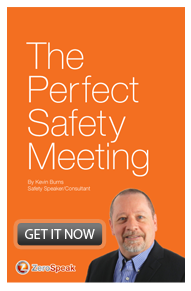To fix safety performance, you must first fix the engagement issue.
 Gallup pegs the disengagement rate of employees and workers at around 70%. 7 out of 10 employees, workers and contractors are not actively engaged in their work. Here’s why that spells big trouble for safety. If a worker is not engaged in their work, then they are not engaged in safely doing their work. You cannot be disengaged from the job but still engaged in safety. To fix the safety performance, you must first fix the engagement issue.
Gallup pegs the disengagement rate of employees and workers at around 70%. 7 out of 10 employees, workers and contractors are not actively engaged in their work. Here’s why that spells big trouble for safety. If a worker is not engaged in their work, then they are not engaged in safely doing their work. You cannot be disengaged from the job but still engaged in safety. To fix the safety performance, you must first fix the engagement issue.
Front-line supervisors and front-line safety people need to become CEOs: Chief Engagement Officers.
In the battle for the hearts of minds of employees in safety, there are three things that you are probably overlooking:
1Safety Marketing - do not overlook this. Marketing works. Otherwise companies around the globe would stop promoting their products, services and ideas. Without marketing, ideas and products fail to take hold. As I wrote in PeopleWork: The Human Touch in Workplace Safety, warnings warn; communications inform; but marketing moves people. Telling your people isn’t enough. Stop presenting passive information. Start making your people feel something about safety. Downloaded safety slogans from the Internet posted around your workplace will fail to engage. That’s because you’re pushing what you think on your people without their input.
You have a plan for safety don’t you? What's your plan for marketing safety? You need a marketing plan, a strategy. (You will find a step-by-step guide to create yours in Chapter 8 of PeopleWork: The Human Touch in Workplace Safety). To get safety buy-in, create a safety marketing strategy that is focused on the benefits of safety. It will keep you focused and on-track. It will help you to remove the “barriers to buy-in” that are preventing your people from adopting safety as their way of life.
2Safety Meetings - something far better than the way you’re doing it now. You are overlooking the engagement that a well-executed safety meeting can bring. Your safety meetings are focused on achieving compliance. Instead, what your safety meetings could be helping you to do is to build teamwork, performance and safety culture. Compliance is what happens when you achieve the bare minimum of the safety code. Teamwork, performance and safety culture are what happen well beyond the minimums of the code.
People who aren’t engaged aren’t listening. Good luck getting compliance from people who aren’t listening. Safety meetings should be used as an opportunity to motivate and inspire. Meetings should be an opportunity for employees to ask questions and express ideas. But when you show up with 27 PowerPoint slides covering off 14 different topics, you lose them. No one learns that way. You’re lecturing too much information AT them and not having enough conversation WITH them. The purpose of the safety meeting is to help them be better; not just better-informed. Do something more than inform them. Make them feel like the work they do matters, that they matter and that their safety matters. Give them more of what matters to them and less bullet-points.
3People-view - are you working with the goal of improving your people or to keep them following rules? If you’re policing, you’re not building safety partners. When you’re focused on catching mistakes, you’re not focused on teaching them how to do things right. Holding their jobs over their heads as a threat to comply with safety is terrible management. It means you view your people so glibly that you don’t care if they come back to work tomorrow. If you feel that your people can’t be trusted when you turn your back, you won’t trust them. People who don’t feel trusted and valued don’t care about the quality of their work.
But here’s the hard, cold dose of reality: employees are a reflection of their bosses. If your people take shortcuts, flaunt safety procedures and generally show contempt for the work and safety, that’s on the supervisor. A positive people-view encourages people to want to do the right thing. A supervisor with a positive people-view will help work on his people’s potential.
 When you truly believe that your people are important, you’ll work hard to communicate with them effectively in a way that makes them want to be better. You will inspire them in safety meetings to involve themselves and to take ownership of safety. You will value them in the way that you view them. People will care about their safety when they know how much you care about them.
When you truly believe that your people are important, you’ll work hard to communicate with them effectively in a way that makes them want to be better. You will inspire them in safety meetings to involve themselves and to take ownership of safety. You will value them in the way that you view them. People will care about their safety when they know how much you care about them.
Safety is more than rules and procedures. Stop overlooking the opportunities you have to engage and inspire outstanding safety behavior. For more information on the three points above, pick up PeopleWork: The Human Touch in Workplace Safety.
Kevin Burns is a management consultant, international thought-leader in workplace safety, and a speaker based in Calgary, Alberta, Canada. Kevin has authored ten books on human performance and safety, including his most recent release, PeopleWork - The Human Touch in Workplace Safety.
©2016 ZeroSpeak Corporation and Kevin Burns.
No part of this post may be reproduced without the expressed consent of the author.


